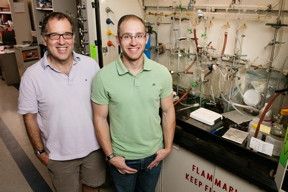Abstract: Fuel cells have long held promise as power sources, but low efficiency has created obstacles to realizing that promise. Researchers at the University of Illinois and collaborators have identified the active form of an iron-containing catalyst for the trickiest part of the process: reducing oxygen gas, which has two oxygen atoms, so that it can break apart and combine with ionized hydrogen to make water. The finding could help researchers refine better catalysts, making fuel cells a more energy- and cost-efficient option for powering vehicles and other applications.
Led by U. of I. chemistry professor Andrew Gewirth, the researchers published their work in the journal Nature Communications.
Iron-based catalysts for oxygen reduction are an abundant, inexpensive alternative to catalysts containing precious metals, which are expensive and can degrade. However, the process for making iron-containing catalysts yields a mixture of different compounds containing iron, nitrogen and carbon. Since the various compounds are difficult to separate, exactly which form or forms behave as the active catalyst has remained a mystery to researchers. This has made it difficult to refine or improve the catalyst.
